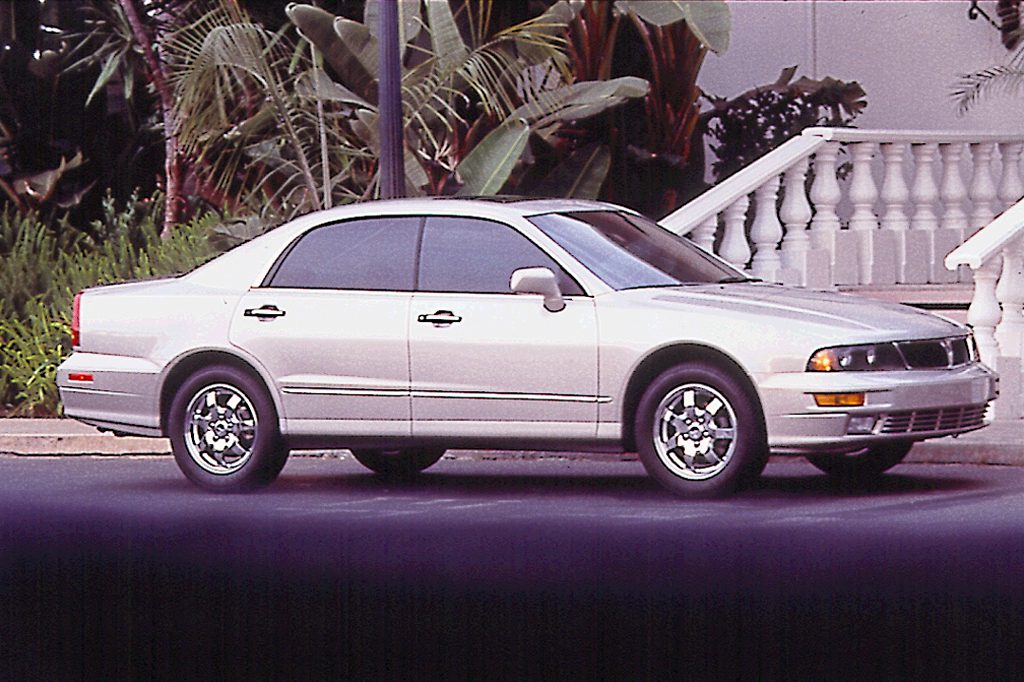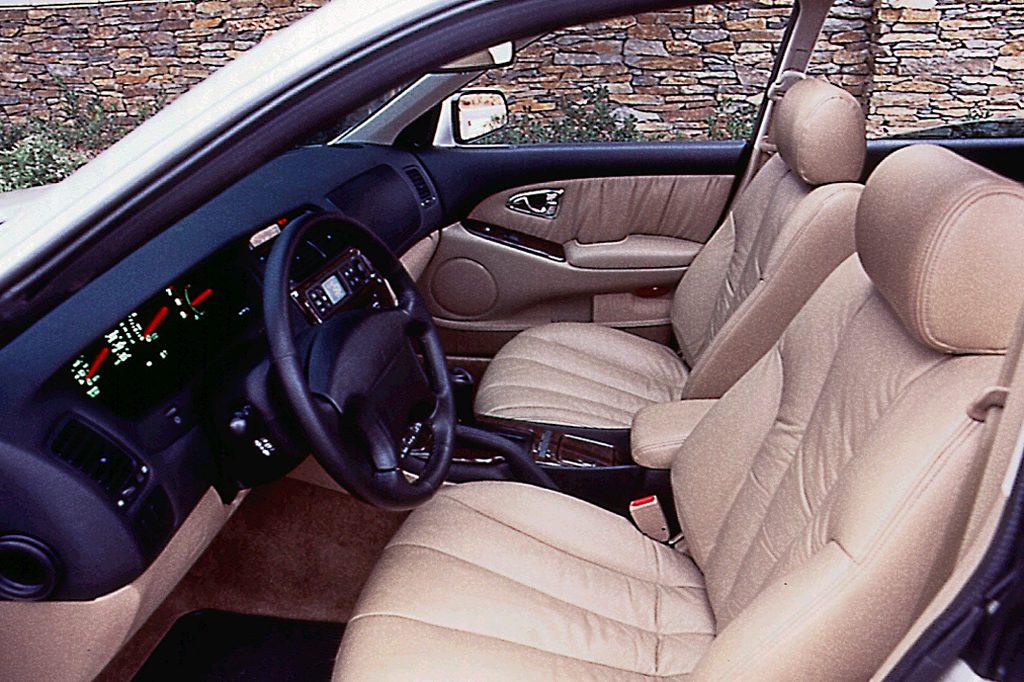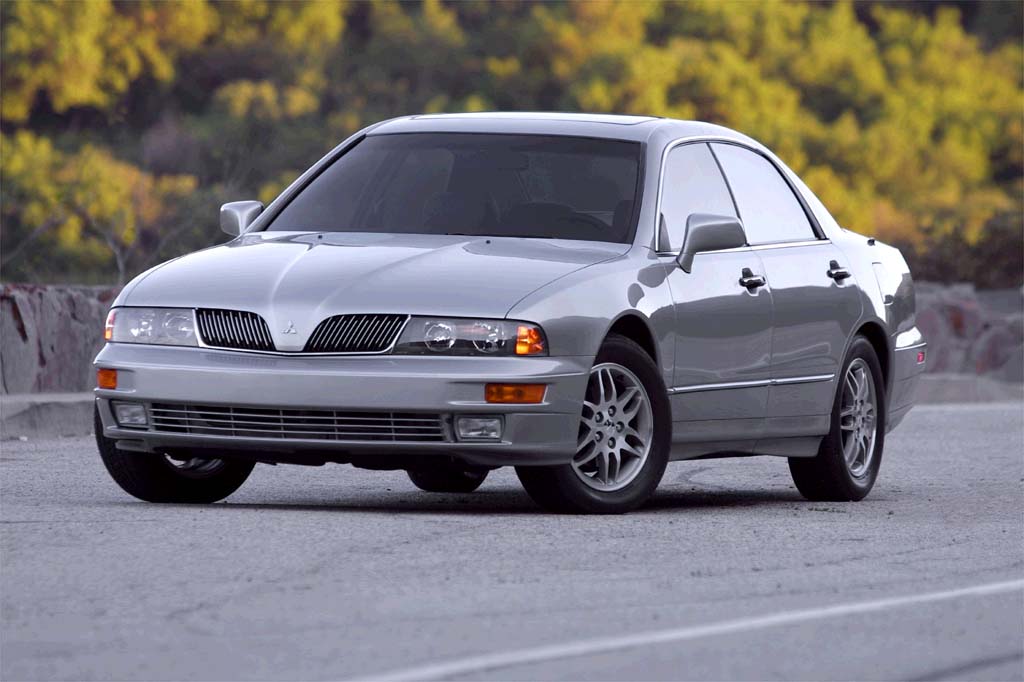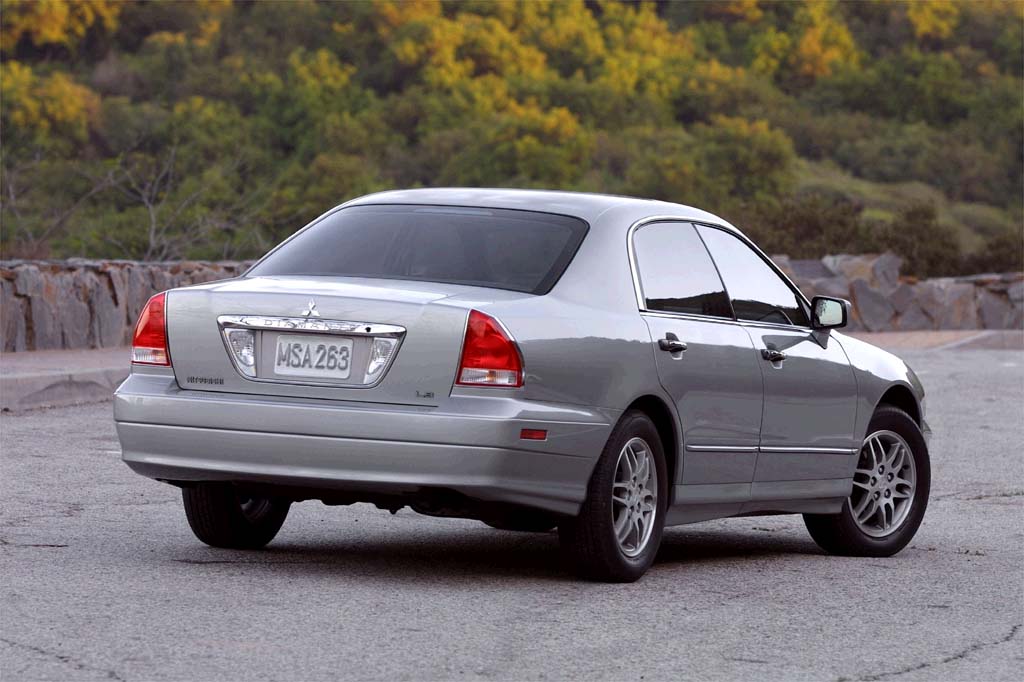| Premium midsize car; Built in Australia |
|
|
| Good condition price range: $1,600 – $5,000* |

1997 Mitsubishi Diamante

1997 Mitsubishi Diamante

1997 Mitsubishi Diamante interior

2002 Mitsubishi Diamante

2002 Mitsubishi Diamante
| Pros: |
|
| Cons: |
|
In this highly competitive class, although other near-luxury cars rate higher, Diamante’s price on the used-car market makes it worth considering. LS has been the “consumer” model, with the ES going largely to corporate fleets. Despite solid improvement in performance, room and refinement, some rivals–especially the Lexus ES 300–improved more and also promised greater prestige.
Overview
Built in Australia, Mitsubishi’s front-drive near-luxury sedan served as its U.S. “flagship.” A previous Diamante had been marketed through 1995, but consigned to the rental-fleet business in ’96, its final season.
Redesigned for 1997, the new Diamante was nearly 4 inches longer than before, with a bigger interior and crisper styling than its predecessor. The V6 engine also grew in size, to 3.5 liters with a 210-horsepower rating. Only a sedan was produced this time; the former station wagon was gone. Rivals included the Infiniti I30, Lexus ES 300, Acura TL, Mazda Millenia, and Nissan Maxima ES.
Diamantes came in base ES or upscale LS trim. Despite an unchanged wheelbase, interior volume grew by 7.4 cubic feet. Weight dropped by nearly 250 pounds, thanks to greater use of aluminum components.
Dual front airbags were standard, with antilock brakes an option. The standard 4-speed automatic transmission varied its shifts depending upon the driver’s style.
Standard equipment included power windows, mirrors and locks; a security system; automatic climate control; cassette stereo; 15-inch tires; and a 3-point rear center seatbelt. The LS sedan added wider 16-inch tires on alloy wheels, a power driver’s seat, CD player, and leather interior trim. New options included a built-in rear child-safety seat.
Yearly Updates
| 1998 Diamante Not much change was evident in the new Diamante’s second season. Antilock braking and keyless entry now were standard on both the ES and LS sedans. The LS gained a power moonroof and a Homelink remote-control transmitter to open the garage door. |
| 1999 Diamante Little-changed this year, Mitsubishi’s near-luxury sedan dropped to a single model rather than the previous ES and LS editions. Antilock brakes and a keyless-entry system were standard. A new Cold Weather Package option included traction control and heated front seats. |
| 2000 Diamante A short list of modifications for 2000 included a newly standard anti-theft engine immobilizer and a newly optional in-dash 6-disc CD changer. After being abandoned for ’99, the former ES and LS model designations were resurrected. In essence, the new ES sedan was equipped like the single ’99 model, but with a CD player. The 2000 LS contained equipment previously offered in Luxury and Premium packages. However, foglights, heated mirrors and front seats, and traction control, were combined into a new All-Weather option group. |
| 2001 Diamante Rear child-seat anchors were the only addition for 2001. |
| 2002 Diamante Diamante got revised styling front and rear, and added a new model for 2002. The new VR-X version had 210 hp vs. 205 in the other trim levels. |
| 2003 Diamante VR-X also gets a special black-mesh grille, aero-look lower body styling, cloth front sport seats, and wheel-opening flares. |
| 2004 Diamante The Diamante gets only cosmetic changes this year, including a re-designed nose, restyled dashboard and center console, new colors and interior trim, and a standard rear spoiler for the VR-X. |
